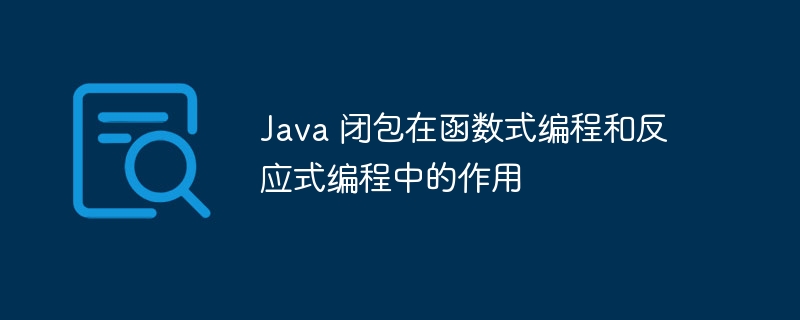Home >Java >javaTutorial >The role of Java closures in functional and reactive programming
The role of Java closures in functional and reactive programming
- WBOYWBOYWBOYWBOYWBOYWBOYWBOYWBOYWBOYWBOYWBOYWBOYWBOriginal
- 2024-04-30 12:39:01913browse
Closures play a key role in functional and reactive programming. In functional programming, they create reusable blocks of code that perform calculations on sets. In reactive programming, they are used to react to changes in event sources. Practical examples include calculating averages using functional closures and creating counters using reactive closures.

The role of Java closures in functional programming and reactive programming
Overview of closures
A closure is a function created inside a function that can access and modify variables in the scope outside the function. This enables a function to maintain state about its external environment after execution.
Closures in Functional Programming
In functional programming, closures are used to create reusable and composable blocks of code. For example, we can use closures to create a function that performs calculations on a collection:
// 创建一个闭包,用于计算集合中所有元素的总和
Function<List<Integer>, Integer> sum = numbers -> {
int total = 0;
for (int number : numbers) {
total += number;
}
return total;
};Closures in reactive programming
In reactive programming, closures are used to create responses to events Reactive streams that react to changes in the source. For example, we can use closures to create observers that react to button click events:
// 创建一个闭包,用于对按钮单击做出反应
Flowable<String> buttonClicks = Observable.create(emitter -> {
JButton button = new JButton("Click Me");
button.addActionListener(e -> emitter.onNext("Button clicked"));
});Practical example
Calculate average using functional closures
// 使用闭包创建可重用函数来计算平均值
Function<List<Integer>, Double> average = numbers -> {
if (numbers.isEmpty()) {
return 0d;
}
return (double) sum.apply(numbers) / numbers.size();
};Creating counters using reactive closures
// 使用闭包创建反应式计数器
Flowable<Long> counter = Observable.generate(() -> 0L, (count, emitter) -> {
emitter.onNext(count);
return count + 1;
});The above is the detailed content of The role of Java closures in functional and reactive programming. For more information, please follow other related articles on the PHP Chinese website!

